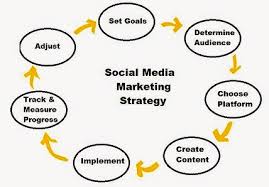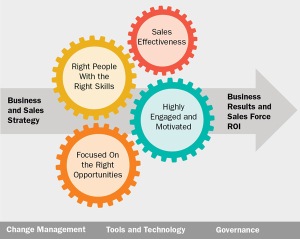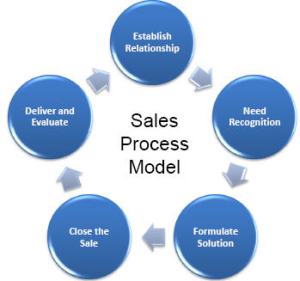This is a seven step guide to creating a social media marketing strategy to reach more customers and drive greater on-line awareness for your brand or product. For a business to really capitalise from social media, it needs to build a clear strategy that takes into account what are the goals, what are you trying to achieve, who are the target customers are and what is the competition is doing.
Social media marketing can be defined as the use of blogs, articles and content marketing, white papers, video and images to share on social networks to raise awareness to pull in the web traffic and prospects
1st Step; Understand your social media goals
As with any planning in business, the first thing anyone needs to do when creating a social media marketing strategy is to understand what you want to get from it?. What are the goals (traffic, leads, likes, buyers, SEO) so you know the purpose of your social media efforts. For some businesses it is to do with creating or raising awareness of a brand or product. For some companies the focus will be on generating leads, increasing sales or driving website traffic. Larger companies many look to social media to build customer loyalty, increase community size or use as a communication channel. The key point here is the goal for your social media strategy has to go beyond simply gaining Facebook likes and Twitter followers. The above examples are only a few areas a business could focus on, but depending on your resources a business should ideally focus on one primary or one secondary goal. Remember if you do not have goals, targets and measures of success then in all likelihood you are not going to accomplish any meaningful results from social media activity.
2nd Step; Create measurable targets and objectives
The second step is to now set clear targets and objectives based on the goals you have set. Remember the “S.M.A.R.T” method, so make sure your social media goals are Specific, Measurable, Attainable, Relevant and Time based.
Let us take the example of a business with a social media goal focused on increasing sales, then you might decide that the target is to generate an additional fifty on-line leads a month via landing pages, whitepaper or eBook downloads. If on the other hand, the goal set is to create brand awareness, then a target could the number of times your brand is mentioned on the social media networks per month. Also worth noting at this point, your goals, targets and objectives for social media should be directly tied to overall business goals, and they should be achievable. Goals without targets, actions and activities are just wishful thoughts. It is important to make sure the objectives are time limited. For example, you need to achieve a 100 percent growth in on-line leads generated within the next six months, not at some vague point in the future.
Now that you have set the targets and objectives you need to make sure you can measure them. There are lots of social media tools to track and analyse activity and quantify your progress. These tools like Klout, Google Analytic, TweetDeck, Buffer or Social Mention to name a few, can let you know when your progress plus they will also help you to identify any trends early and adjust your activities if you have to.
3rd Step; Customer targeting – who do you sell to
So now, the goals, targets and objectives have been set so now you know where you are going, so all set, right?, well no because you still do not know how you are going to get there. You see a successful social media strategy is all about customer targeting, reaching the right people with the right messages. To do this, a business needs to understand “who do you sell to”. For example, there is no point in targeting everyone who has an interest in sport if you really want to target only those who are cycling enthusiasts.
The best way to do this is to draw up a buyer profile. What does the profile of your ideal customer or buyer look like? Make it personal and give them a name. Where do they work? How old are they? What social networks are they likely to be on? What is their income? How often do they cycle (as in above example) Do they have children? What brands do they like or dislike? What motivates them? The list of detail goes on. If you find that you have more than one ideal customer or buyer profile then create a persona for each.
4th Step; Monitor the competition
As social media activity is mostly transparent, monitoring your competitions activity will tell you a lot about what works and what does not. After all, you are all targeting the same customer set. By constantly monitoring the competition, you have a fantastic opportunity to learn from their activity and actions.
This fourth step involves researching your competitors, maybe select ones your own size, in similar locations and some of the big ones. Find out what social networks they are active on, study their content (articles, case studies, whitepapers, videos, promotions, links). Is it direct or educational? What kind of industry references do they use? Do they talk about their product, markets, industry or brand and what if any other things do they focus on (events, discounts, and webinars)? - read the full article here Social Media Marketing Strategy – The Bitter Business




